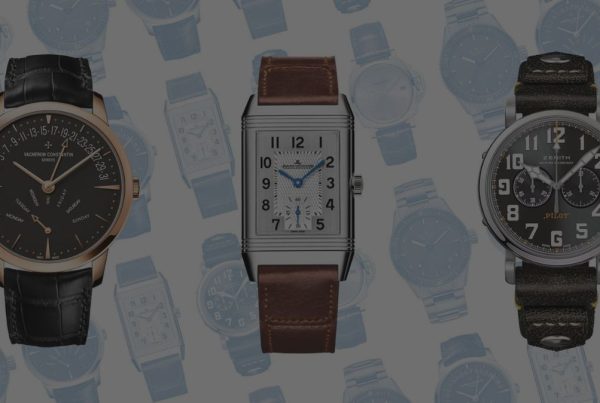Saudi Arabia’s streetwear scene is no longer just a subculture imitating Western trends — today’s young Saudis are making it their own. Through blending local heritage, social change, digital identity, and global fashion flows, they’re building brands, aesthetics, and attitudes that reflect their generation. This shift carries implications for culture, business, identity, and even geopolitics.
Table of contents
- Historical & Cultural Backdrop
- Key Drivers: What’s Enabling This Redefinition
- Key Players: Brands & Creators Leading the Way
- What Redefined Streetwear Looks Like in Saudi: Key Features & Trends
- Tensions & Challenges
- Impact & What This Means Going Forward
- Where It’s Heading: Emerging Futures
- What Makes This Unique: Saudi vs Other Streetwear Scene
- Tips for Brands/Designers Wanting to Enter or Grow in This Space
Historical & Cultural Backdrop
- Tradition meets modernity: Saudi Arabia has long had strong traditional dress codes (thobes, abayas, modest wear), which defined not just fashion but social identity. But as reform, globalization, social liberalization, and exposure to global popular culture increase, so do opportunities for youth to reinterpret those norms. (Arab News)
- Vision 2030 & social changes: Government reforms aiming at diversifying culture, boosting creative industries, loosening some conservative restrictions, and investing in entertainment & arts have created more space for young people to experiment. Though not always explicitly streetwear policy, the cultural opening gives breathing room. (This is implied in many reports of local brands getting attention, pop-ups, fashion weeks etc.) (Arab News)
Key Drivers: What’s Enabling This Redefinition
| Driver | What it is | Why it Matters |
|---|---|---|
| Youth demographics | A large portion of the population is under 30; Gen Z especially with global internet access and disposable income. (Accio) | They are both the consumers and creators; their values—identity, authenticity, expression—shape what gets made and what sells. |
| Social media & influencer culture | Platforms like TikTok, Instagram, Snapchat where fashion is shown, codified, shared. Also influencers/designers collaborating, sharing origin stories. (Jing Daily) | Makes trends travel faster, gives exposure to lesser-known brands, helps build community & cult followings. |
| Desire for identity & expression | Many youth see streetwear as a way to show more than just fashion—heritage, political or social leanings, language (Arabic/English mix), pride. Brands use Arabic script, local symbols, historic references. (Fact Magazines) | This authenticity differentiates Saudi streetwear from generic global streetwear; builds loyalty; helps stand out internationally. |
| Local brands & creative entrepreneurship | Many Saudi designers are founding streetwear labels; using limited drops, pop-ups, collaborations; mixing with art, music. (The Arabian Leaders) | Enables ownership of narrative, builds local creative economy; creates new jobs. |
| Hybrid aesthetics | Mix of global streetwear (hoodies, oversized silhouettes, graphics) + Arabic calligraphy, traditional motifs, modest dress, cultural symbols. Also combining relaxed comfort + style. (Serbfashion) | This gives Saudi streetwear its unique flavour; appeals both domestically and abroad. |
| Exclusivity, hype, scarcity model | Some brands releasing limited-drop collections, building demand via scarcity or event-driven releases. (The Arabian Leaders) | Helps build brand value; dare-to-be-different mindset; helps avoid over-saturation and keeps cultural cache. |
Key Players: Brands & Creators Leading the Way
Here are some illustrative examples of brands and creatives redefining streetwear in Saudi:
- 1886 (Fahad Al-Jomaiah & Khalid Aljammaz) — blending minimalist design, cultural references, bold iconography, very intentional storytelling. Their drops, digital presence, collaborations, art-driven content all contribute. (The Arabian Leaders)
- Hindamme (Mohammed Khoja) — known for modernizing heritage (e.g. Sadu patterns, “Driving Jacket” referencing women’s driving rights) while paying attention to sustainability. (ZiiMag)
- +MMMORE, TorbaStudio, Proud Angeles, LAVIST — among brands mentioned in GRAZIA list for reclaiming culture, working in bold colours, elevated streetwear, but also preserving identity. (Grazia)
- Not Boring, ANONYMOUS, DHAD, etc. — they show diversity in voice, aesthetic approach, creative risk. Some integrate humor, some more political commentary. (Fact Magazines)
What Redefined Streetwear Looks Like in Saudi: Key Features & Trends
Putting together observed elements, here’s how streetwear in Saudi is being redefined in practice:
- Cultural motifs & language: Use of Arabic script, local symbols, heritage arts (calligraphy, weaving, petroglyphs) in prints, embroidery, or fabric details. (Grazia)
- Modest fashion integration: Brands reimagining modest wear with streetwear silhouettes — e.g. layering, sportswear elements, making abayas or thobes more design-forward. (Grazia)
- Silhouette & color experimentation: Oversized hoodies, relaxed fits, bold colour blocking, neon accents, high contrast, retro influences. (Arab News)
- Limited drops & exclusivity: Small batch releases, pop-ups, event-based activations, building hype. (The Arabian Leaders)
- Digital storytelling & community building: Brands using social media, visuals, videos, collaborations with local artists, exhibitions, involving music & art to create culture not just clothes. (The Arabian Leaders)
Tensions & Challenges
Redefining culture comes with friction. Some of the key challenges:
- Balancing authenticity vs commercial viability: Using local motifs or political/social references can alienate some markets; production costs higher; scale vs staying true.
- Conservative norms & social expectations: While reforms are widening possibilities, social conservatism still plays a role. Modest expectations, certain dress norms, gender norms can constrain expression.
- Sustainability & sourcing: Many youth demand ethical, environmentally friendly production; local materials may cost more; also supply chain, quality control, fair labor etc.
- Competition & saturation: As more brands emerge, standing out becomes harder; keeping design fresh, brand story compelling, and avoiding copying/overlap is challenging.
- Regulatory, infrastructural & logistical hurdles: Manufacturing, retail space, import/export, quality standards, digital commerce infrastructure can be imperfect.
Impact & What This Means Going Forward
- Cultural empowerment and identity affirmation: Saudi youth are taking ownership of representation. Fashion becomes a form of soft power, reclaiming narratives.
- Economic opportunity: Local brands grow, creative industries expand, opportunities for designers, artisans, marketers etc. Contribution to Vision 2030 goals.
- Global visibility: Saudi streetwear brands are increasingly visible outside the region; collaborations, international fashion weeks, digital reach help global recognition.
- Shift in global streetwear dynamics: Rather than being passive consumers, Saudi youth are influencing global trends, especially in aesthetics, modest fashion, fusion design.
- Changing consumer expectations: Demand for authenticity, sustainability, local relevance; less appetite for “just buying logos.”
Where It’s Heading: Emerging Futures
- More crossovers with art, music, and media: Streetwear will continue to intersect with local music scenes, visual arts, film, and digital culture.
- Tech integration: AR fitting rooms, virtual fashion, NFTs or web3 ideas, maybe interactive wearable tech.
- Sustainability and ethical fashion getting stronger: More brands will integrate sustainable materials, local craftsmanship, fair labor.
- Modest fashion’s global influence: The merging of modest wear + streetwear could become a global style niche.
- Greater regional/global collaboration: Partnerships with international brands, cross-GCC or MENA wide cooperation; possibly Saudi brands being retailers globally.
What Makes This Unique: Saudi vs Other Streetwear Scene
To understand the Saudi twist, it helps to compare with classic streetwear hubs (US, Europe, East Asia):
- Heavy emphasis on heritage symbols & local culture that are deeply meaningful, not just decorative.
- Modesty and conservative social norms influencing design decisions (fits, silhouettes, layering) more than in many Western contexts.
- Rapid change: social liberalization, reform, youth culture shifting quickly, digital adoption high.
- Government backing more visible (through events, programs, creative industry incentives) than perhaps in earlier stage scenes.
Tips for Brands/Designers Wanting to Enter or Grow in This Space
If you’re a designer, founder, or brand trying to engage with this movement, here are some best practices:
- Root your narrative in authenticity — local culture, heritage, stories, your own experience. Don’t borrow superficially.
- Engage community — collaborate with local artists, musicians, influencers; do pop-ups; build a dialogue rather than just selling.
- Quality over quantity — limited drops, premium materials, good craftsmanship help build reputation.
- Know your audience & platform — younger generations are social-media first; digital marketing, content matters as much as the physical piece.
- Respect norms but push boundaries — understand local cultural sensitivities, but design innovation often lives in that space of tension.
- Think sustainability & ethics early — this is increasingly non-negotiable for youth everywhere.
- Scale smartly — when expanding beyond local, careful to maintain identity; sometimes elements that appeal at home might need adaptation abroad.
Saudi youth are not just adopting streetwear — they are transforming it. Through their creativity, fusion of tradition and modernity, social consciousness, and demand for identity, they’re building a distinct voice in global fashion. It’s a movement that matters not just for style, but for culture, empowerment, and how the Kingdom (and the region) tells its story to itself and the world.







